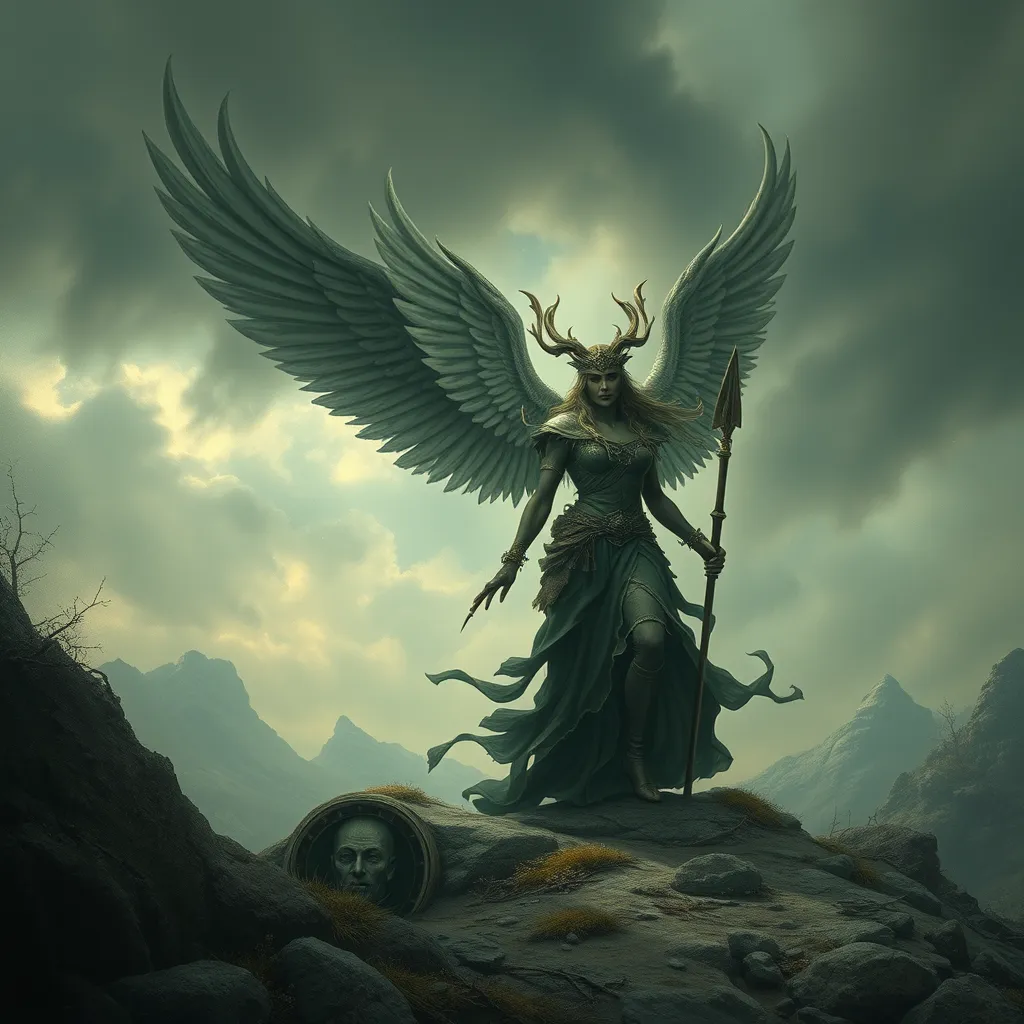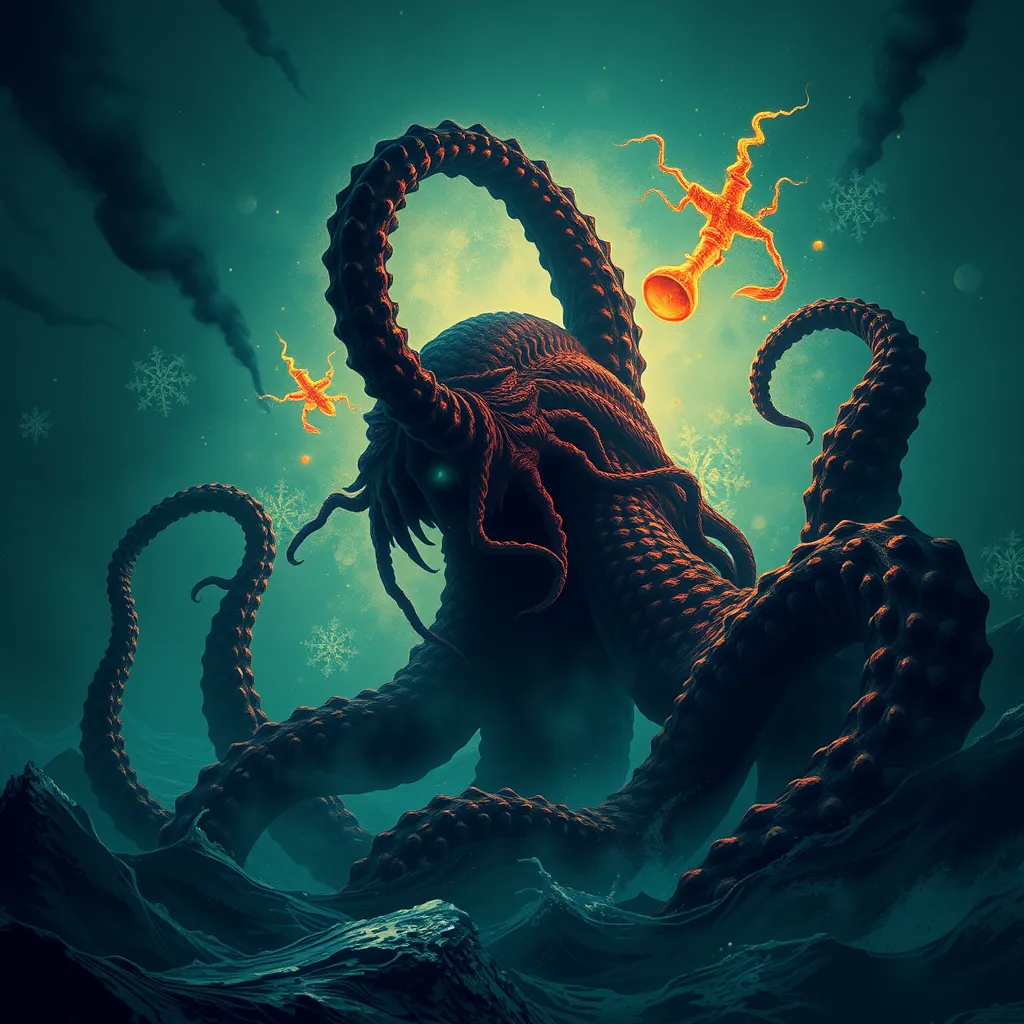Valkyries in Folklore: Exploring the Stories and Traditions Surrounding the Choosers of the Slain
I. Introduction
Valkyries are fascinating figures steeped in the mythos of Norse culture, often recognized as the choosers of the slain. These warrior maidens served a crucial role in the afterlife of Norse warriors, guiding those who died honorably in battle to Valhalla, the great hall of Odin. Their importance extends beyond mere myth; Valkyries embody the ideals of valor, fate, and the complex relationship between life and death in Norse mythology.
This article aims to explore the historical context, roles, and symbolism of Valkyries, as well as their influence on literature and contemporary culture, thereby illuminating their enduring legacy in both ancient and modern narratives.
II. Historical Context of Valkyries
A. Origins of Valkyrie myths in Norse culture
The origins of Valkyrie myths can be traced back to the early Norse sagas and poems, where they were depicted as divine figures who chose those who would die in battle. The term “Valkyrie” itself derives from the Old Norse “valkyrja,” meaning “to choose the slain.” This etymology highlights their primary function within the mythos, as they determined the fate of warriors based on their bravery and honor.
B. The connection between Valkyries and Viking warrior culture
In Viking society, a culture that glorified warfare, Valkyries represented the ultimate reward for valor in battle. Warriors aspired to earn the favor of these divine maidens, believing that their selection would lead them to eternal glory in Valhalla, where they would feast and prepare for Ragnarok, the end of the world. This connection reinforced the warrior ethos, where honor and bravery were paramount.
C. Evolution of Valkyrie narratives through the Middle Ages
Throughout the Middle Ages, Valkyrie narratives evolved, influenced by the changing social and religious landscapes of Scandinavia. As Christianity spread, the role of Valkyries began to shift, often being portrayed in a more negative light, associated with death and the supernatural. However, remnants of their original valor and strength persisted in the folklore and literature of the time.
III. The Role of Valkyries in Norse Mythology
A. Description of Valkyries as warriors and divine figures
Valkyries are often depicted as beautiful, strong women clad in armor, wielding weapons, and riding swift steeds. They are both warriors and divine beings, having the power to influence the outcomes of battles and the fates of mortals. This duality imbues them with a sense of mystery and power, making them central figures in the Norse pantheon.
B. The function of Valkyries in the selection of slain warriors
The primary role of Valkyries is to select those who are worthy of entering Valhalla. They observe the battlefield, determining which warriors have fought bravely and honorably. Once chosen, these warriors are escorted to the hall of Odin, where they will join other valiant fighters in preparation for the final battle against the forces of chaos.
C. Relationships with other deities, particularly Odin
Valkyries have a close association with Odin, the chief god in Norse mythology. They serve him directly, acting as his agents in selecting the slain. This relationship emphasizes Odin’s role as a god of war and death, and it highlights the Valkyries’ position as both his servants and protectors of the heroic dead.
IV. Iconography and Symbolism
A. Common representations of Valkyries in art and literature
Throughout history, Valkyries have been depicted in various forms of art and literature. Common representations include:
- Paintings showcasing their warrior nature, often in dramatic battle scenes.
- Sculptures that highlight their beauty and strength, sometimes depicted with wings.
- Literary descriptions in sagas and poems that emphasize their roles as both warriors and divine figures.
B. Symbolism associated with Valkyries (e.g., death, valor, fate)
Valkyries embody numerous themes in Norse mythology, including:
- Death: As guides for slain warriors, they symbolize the inevitability of death and the honor of dying in battle.
- Valor: They represent the ideal of courage, rewarding those who display bravery with a place in Valhalla.
- Fate: Their role in choosing who lives and dies illustrates the concept of fate, a central theme in Norse belief.
C. The duality of Valkyries as both protectors and harbingers of death
The duality of Valkyries is crucial to understanding their significance. While they protect the honor of warriors by leading them to Valhalla, they are also agents of death. This complex nature reflects the Norse worldview, where life and death are intertwined, and the warrior’s path is one of both glory and sacrifice.
V. Valkyries in Literature and Poetic Tradition
A. Analysis of Valkyries in the Poetic Edda and Prose Edda
The Poetic Edda and Prose Edda are primary sources of Norse mythology, containing numerous references to Valkyries. These texts illustrate their roles in battles and their interactions with gods and heroes, showcasing their importance in the Norse cosmology.
B. Influence of Valkyries in later literary works (e.g., Wagner’s operas)
Valkyries have influenced many later works of art and literature, most notably in Richard Wagner’s operas. In “Die Walküre,” the Valkyries are central characters, celebrated for their strength and valor, which has helped to popularize their image in modern culture.
C. Modern interpretations and adaptations in popular culture
In contemporary media, Valkyries have been reinterpreted in various forms, including:
- Films that explore Norse mythology, such as “Thor,” where Valkyries are depicted as powerful warriors.
- Video games that feature Valkyries as characters, often emphasizing their combat skills and mystical abilities.
- Literature that draws on Valkyrie themes, reflecting modern values of empowerment and resilience.
VI. Regional Variations and Folklore
A. Differences in Valkyrie stories across Scandinavian countries
While Valkyries are a common feature in Norse mythology, regional variations exist across Scandinavian countries. For example, some regions may emphasize their roles more in local folklore, while others might depict them in different ways, sometimes blending them with local spirits or deities.
B. Comparisons with similar figures in other mythologies (e.g., Greek, Celtic)
Valkyries share similarities with figures in other mythologies, such as:
- Greek Mythology: The Furies, who also represent vengeance and the fate of souls.
- Celtic Mythology: The Morrigan, a goddess associated with war and fate, who also chooses the slain.
These comparisons highlight the universal themes of life, death, and valor across different cultures.
C. The impact of local traditions on the portrayal of Valkyries
Local traditions and customs have influenced how Valkyries are portrayed in folklore. In some regions, they may be seen as benevolent protectors, while in others, they might be feared as ominous figures associated with death.
VII. Valkyries in Contemporary Culture
A. Valkyries in modern media, including films and video games
In recent years, Valkyries have experienced a resurgence in modern media. They appear in films, television shows, and video games, often reimagined as strong, independent characters. This representation resonates with contemporary audiences, reflecting changing societal values.
B. The resurgence of interest in Viking culture and Valkyries
The growing interest in Viking culture has led to a renewed fascination with Valkyries. Documentaries, books, and exhibitions exploring Norse mythology have contributed to this cultural revival, showcasing the richness of these ancient stories.
C. Valkyries as symbols of empowerment in feminist discourse
V




